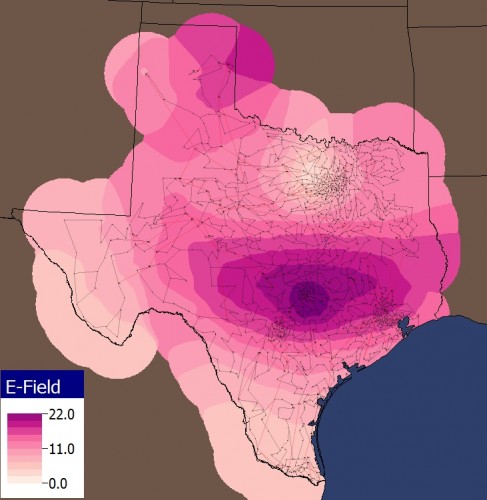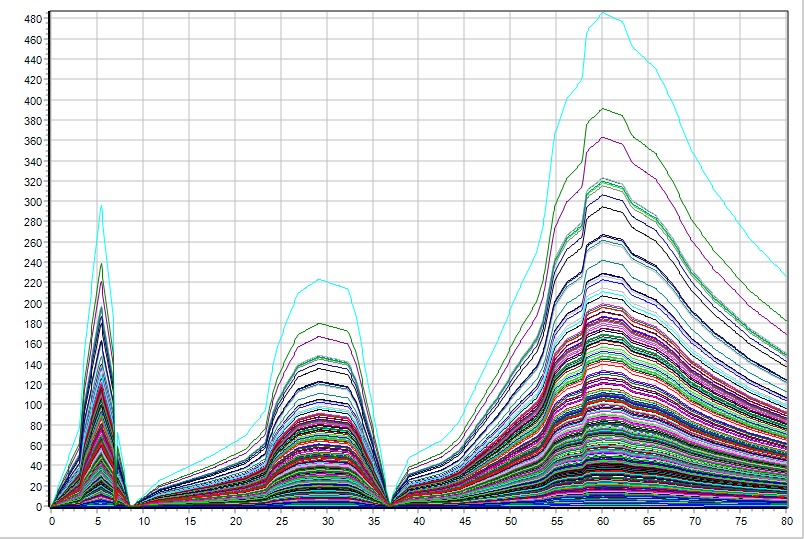EMP Simulation Example
PowerWorld Simulator version 20 includes the ability to analyze the E3 effects of a high-altitude electromagnetic pulse (HEMP) attack on the power system. Algorithms are based on public Oak Ridge National Laboratory research.
To perform a sample analysis:
- Download this file. Extract the contents and open TX2000.pwb with PowerWorld Simulator (version 20 or higher).
- Open the GIC… dialog from the Add Ons ribbon.
- Select the “Time Varying Series Voltage Inputs” Calculation Mode.
- Check the “Use EMP as Input” box.
- Go to the “Field/Voltage Input” page and then the “EMP” tab.
- Change the parameters if desired, or leave the defaults.
- Click “Calculate EMP Input Time Series”. (A time-series of transmission line GIC DC Input Voltages are inserted.)
- Analyze these in steady-state by changing the Current Time and Calculating GIC Values. (More details on the use of PowerWorld Simulator GIC are available in on-line help and in the GIC training slides.)
- Note the “E3A blast” effect peaks around t=5.4s and the “E3B heave” around t=60s.
- Analyze in Transient Stability:
- Open Transient Stability… dialog from the Add Ons ribbon.
- Go to Options -> Power System Model and make sure “Include GIC Effects” is checked.
- Run Transient Stability. (More details on the use of PowerWorld Simulator GIC are available in on-line help and in the Transient Stability training slides.)
Visualization
Surface electric field magnitude 60 seconds after detonation (E3B “heave”):
Transient stability plot of transformer effective GIC currents:
References
Study to Assess The Effects of Magnetohydrodynamic Electromagnetic Pulse on Electric Power Systems: Phase I, Final Report; J. R. Legro, N. C. Abi-Samra, F. M. Tesche; Oak Ridge National Laboratory, Power Systems Technology Program, Energy Division; May 1985.
PSERC Tutorial: High Altitude Electromagnetic Pulse (HEMP) Impacts on the Grid; T. J. Overbye; Power Systems Engineering Research Center (PSERC); June 8, 2016.
Tags: GIC,How-to,Simulator,Tutorial
June 24, 2016


